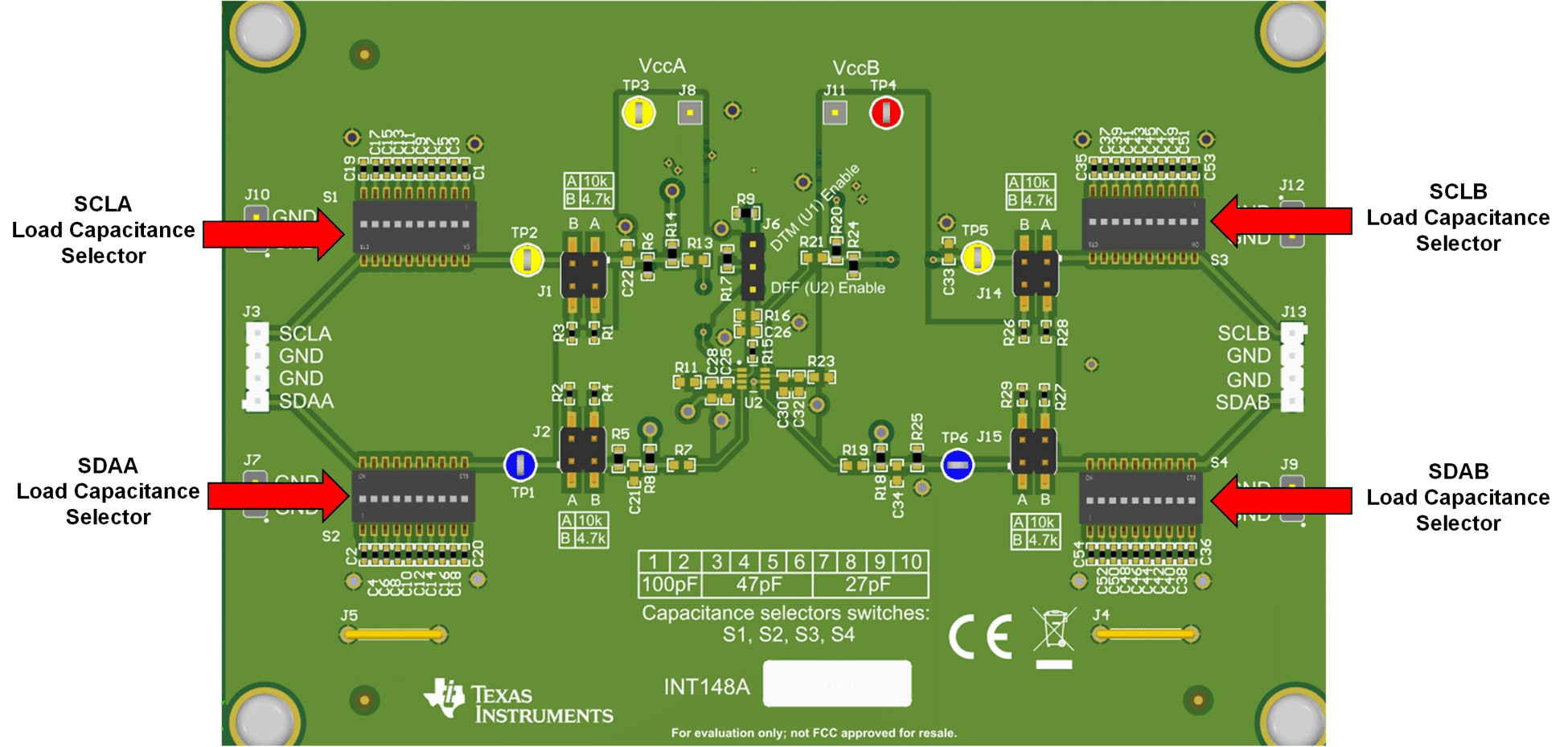SCPU043 March 2021
2.1 Load Capacitance Selector
Figure 2-1 shows the board with the load capacitance selectors labeled.
 Figure 2-1 Load Capacitor Selector
Figure 2-1 Load Capacitor SelectorThe TCA9416 EVM provides a way for the designer to test the device under capacitive loading which is one of the main constraints in an I2C system. Switches denoted as S1, S2, S3, and S4 provide the user with the ability to change the I2C bus capacitance with up to about 500 pF of capacitance. The switched capacitor can be selected in increments of approximately 25 pF, 50 pF, and 100 pF. Each of the switched capacitors have two of each value so any capacitive loading between 0 pF to 500 pF in any factor of 25 pF can be chosen. For example: if the designer wants a total capacitance of 275 pF, the designer chooses to switch in 2 × 100 pF, 1 × 50 pF, and 1 × 25 pF for a combined capacitance of approximately 275 pF.
Note that there is additional capacitance due to parasitics from the PCB line traces and ICs on the board. For SDA and SCL pins of a device, assume 10 pF maximum per device on the I2C line. One important aspect to remember is the TCA9416 device does not redrive an I2C signal. This means the capacitance on both sides of the device are not separated but are technically connected (meaning they add up in parallel) when the signal goes from LOW to HIGH from either SDA or SCL. This is highlighted because the I2C standard limits the bus capacitance to 400 pF for standard and fast mode and 550 pF for fast mode plus. If the I2C system is expected to exceed this amount, an I2C buffer and redriver will be necessary to separate the capacitance between the two sides to be below the required capacitance limits.